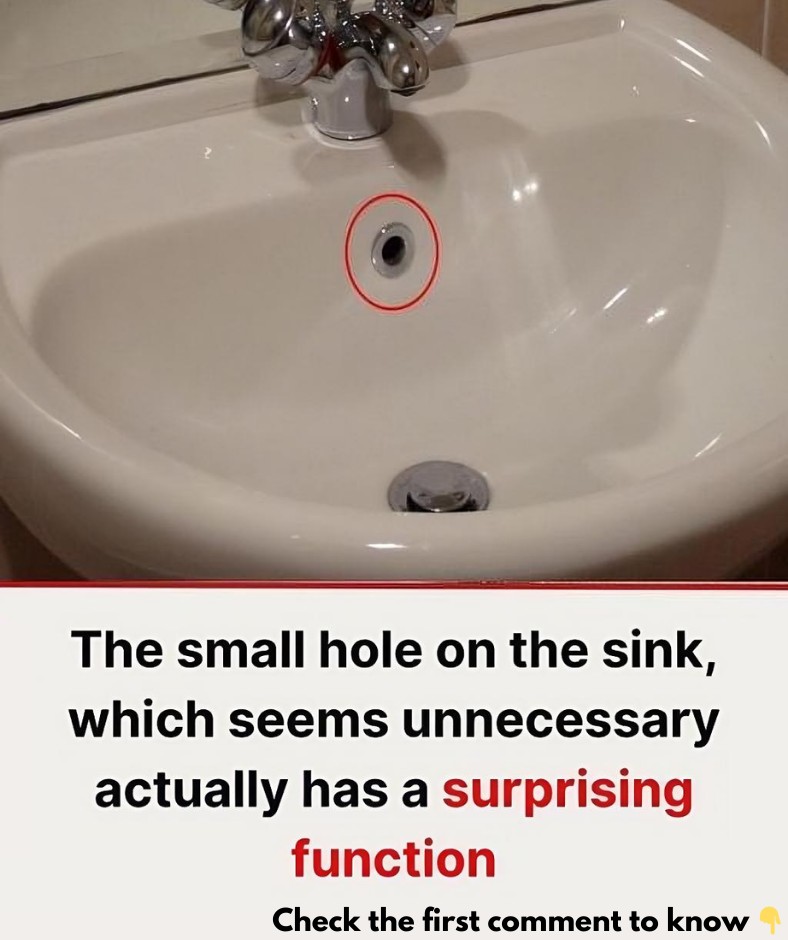Have you ever noticed the small hole just below the faucet in your bathroom sink and wondered why it’s there? While it may seem like an insignificant detail, this unassuming feature plays a vital role in preventing water damage and keeping your bathroom functional. Known as the overflow hole, this small but essential component is a key part of your sink’s design. In this article, we’ll explore its purpose, how it works, and some practical tips to maintain it for a cleaner, more efficient bathroom.

The Overflow Hole: A Built-in Safety Feature
The overflow hole, typically located about a third of the way down the basin, is not just a design choice—it’s a safety feature. Its primary function is to prevent your sink from overflowing and causing water damage to your bathroom floor. Whether you’re distracted and leave the faucet running or dealing with a clogged drain, the overflow hole provides a backup to ensure water doesn’t spill over.
This seemingly minor detail is actually a thoughtful piece of engineering, designed to save you from costly and inconvenient accidents.
How the Overflow Hole Works
The overflow hole is connected to a drainage pipe beneath the sink. Its primary job is to redirect excess water back into the plumbing system before it spills onto your floor. Think of it as your sink’s second line of defense.
Here’s how it functions:
- If the water level in the sink rises to a certain point, it flows into the overflow hole.
- From there, the water travels down a dedicated channel and joins the main drain, preventing spills and potential flooding.
This simple yet effective system ensures your bathroom remains dry, even in situations where the sink might otherwise overflow.
Practical Benefits of the Overflow Hole
While the overflow hole often goes unnoticed, it’s invaluable during everyday mishaps. Here are a few scenarios where this feature can save the day:
- Forgotten Faucets: It’s easy to accidentally leave the faucet running, especially in a busy household. The overflow hole prevents water from spilling onto the floor in such cases.
- Clogged Drains: When the main drain is clogged, the overflow hole acts as an escape route, reducing the risk of a flood.
- Multi-Use Sinks: If you use your sink for tasks like hand-washing clothes or filling it for cleaning, the overflow hole prevents overfilling.
The Hygiene Challenge: Keeping It Clean
While the overflow hole is incredibly useful, it can also become a maintenance headache if neglected. Positioned in a hard-to-reach spot, it’s prone to accumulating grime, mold, and bacteria. This buildup can lead to unpleasant odors and even hygiene issues in your bathroom.
Bathrooms are naturally humid environments, making the overflow hole an ideal breeding ground for mold and bacteria. The limited airflow in this area exacerbates the problem, allowing grime to collect over time.
How to Clean and Maintain the Overflow Hole
Fortunately, keeping the overflow hole clean is simple with regular maintenance. Here’s an easy, effective method using common household items:
1. Use Vinegar and Baking Soda:
- Mix equal parts vinegar and baking soda to create a natural cleaning solution.
- Pour the mixture directly into the overflow hole. The fizzing reaction helps break down grime and kill bacteria or mold.
- Let the solution sit for 5–10 minutes to work its magic.
- Flush with warm water to rinse away any residue and leave the pipes fresh.
2. Regular Maintenance:
- Clean the overflow hole every few months to prevent buildup.
- Use a small brush, like an old toothbrush, for deeper cleaning if needed.
Extra Tips for a Clean Sink
In addition to maintaining the overflow hole, there are a few simple practices to keep your sink spotless:
- Use a Sink Strainer: A strainer helps catch debris and hair, preventing clogs in both the main drain and the overflow pipe.
- Flush Weekly: Pour hot water down the drain weekly to dissolve soap scum and prevent grime buildup.
- Opt for Natural Cleaners: Monthly use of baking soda and vinegar keeps the entire drainage system fresh without harsh chemicals.
- Avoid Strong Chemicals: Harsh drain cleaners can corrode pipes over time. Stick to natural alternatives to protect your plumbing.
The Overflow Hole: A Small Feature with Big Benefits
The overflow hole is a perfect example of how thoughtful design can improve everyday life. Though small and easy to overlook, it serves as a safeguard against water damage, ensuring your sink remains functional and your bathroom stays dry.
This feature is more than a convenience—it reflects the importance of smart design in the fixtures we rely on every day. By keeping it clean and functional, you can ensure your bathroom remains fresh, hygienic, and efficient.
Final Thoughts: Appreciating the Little Things
The overflow hole may seem like an insignificant part of your sink, but its role in preventing floods and maintaining cleanliness is invaluable. Regular cleaning with vinegar and baking soda ensures it stays effective and odor-free.
Next time you notice that small hole below your faucet, take a moment to appreciate its purpose—and give it a little care. This unsung hero of bathroom design is a reminder that even the smallest features can make a big difference in our homes.





